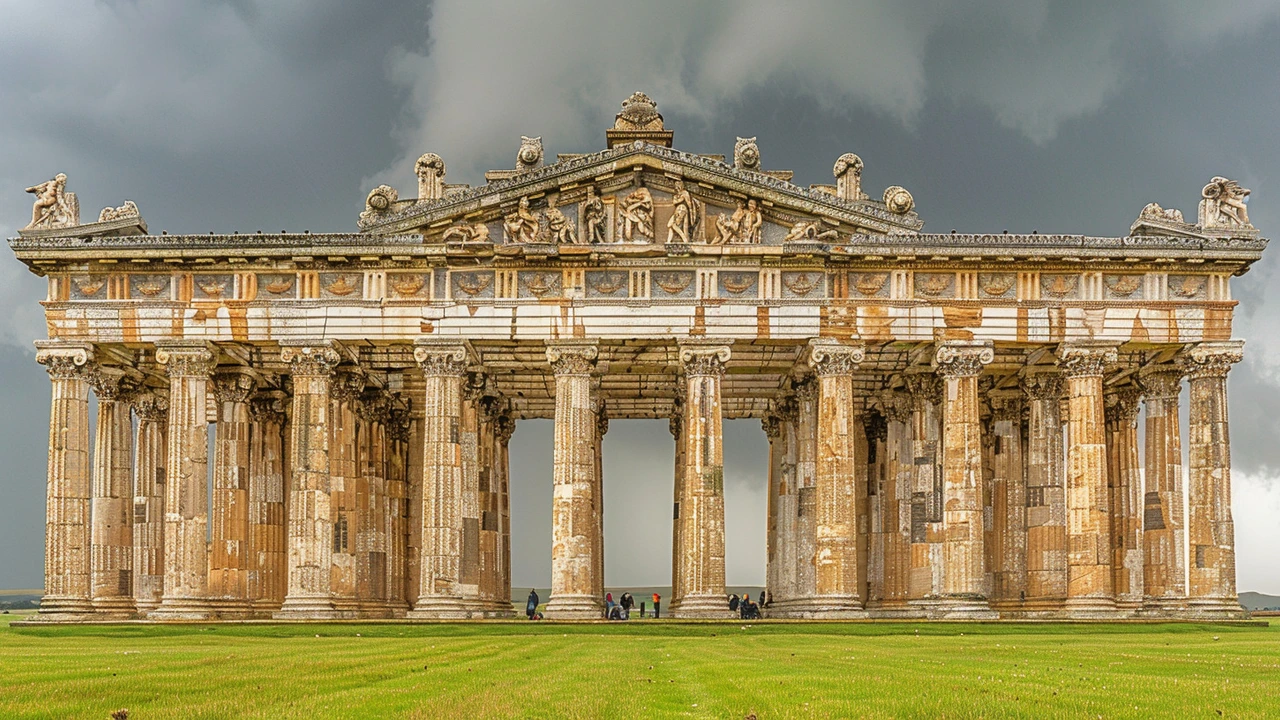Exploring the Beauty and History of Greek Revival Architecture
 Apr, 16 2024
Apr, 16 2024
The Roots of Greek Revival Architecture
The allure of Greek Revival architecture can be traced back to the early 19th century, where it first began to assert its influence in Europe and quickly spread to North America. It emerged as part of the broader Neoclassical movement, which sought to revive and emulate the art, culture, and architecture of ancient Greece and Rome. The discovery of the ancient cities of Pompeii and Herculaneum, as well as the publication of 'The Antiquities of Athens' by James Stuart and Nicholas Revett, played pivotal roles in sparking interest in the classical ideals of beauty and symmetry. This interest manifested architecturally in Greek Revival, a style characterized by its grandiose proportions, columns, and pediments.
In the United States, the Greek Revival style was not just an architectural choice; it was a statement of cultural and political identity, symbolizing democracy and a connection to the principles of ancient Greece. Distinguished buildings such as the Second Bank of the United States in Philadelphia and various courthouses across the country bear the hallmarks of this style. Architects like Benjamin Latrobe and William Strickland were instrumental in popularizing the Greek Revival style, weaving it into the fabric of American architecture.
Defining Features of Greek Revival Architecture
Distinctive features of Greek Revival architecture make it easily recognizable. Prominent among these are the tall columns that draw inspiration from ancient Greek temples, specifically the Doric, Ionic, and Corinthian orders. These columns support a pediment, often triangular, which is another signature element of this style. The façade of a Greek Revival building is typically symmetrical, and windows are usually proportioned and evenly spaced, reflecting a rhythm that contributes to the overall harmony of the structure.
The use of white, whether through paint or marble, is also significant in Greek Revival buildings, intending to mimic the appearance of ancient Greek temples as they were originally perceived (though it is now known that these temples were once brightly colored). Interiors of Greek Revival buildings are as meticulously designed as their exteriors, with decorations often reflecting classical themes such as geometric patterns and mythological motifs. From majestic governmental buildings to quaint farmhouses across the American south, the Greek Revival style showcases its versatility and enduring appeal.
The Legacy and Revival of Greek Revival Architecture
The fascination with Greek Revival architecture did not end in the 19th century. Its principles and aesthetics continue to influence modern architectural designs and conservation efforts. Many contemporary public buildings, especially in the United States, incorporate elements of Greek Revival architecture to symbolize stability, democracy, and history. The preservation of these historic structures is also crucial as they serve as tangible connections to a past era and as symbols of cultural heritage.
Understanding Greek Revival architecture goes beyond appreciating its aesthetic values; it involves recognizing its role in shaping social and artistic narratives through history. This architectural style serves as a reminder of the timeless appeal of classical beauty and the ways in which past cultures continue to influence modern society. Whether restored or reinterpreted, Greek Revival architecture remains a significant element in the architectural landscape, reminding us of the enduring legacy of ancient Greece in contemporary culture.